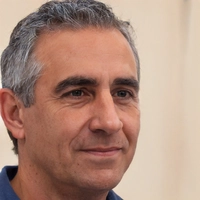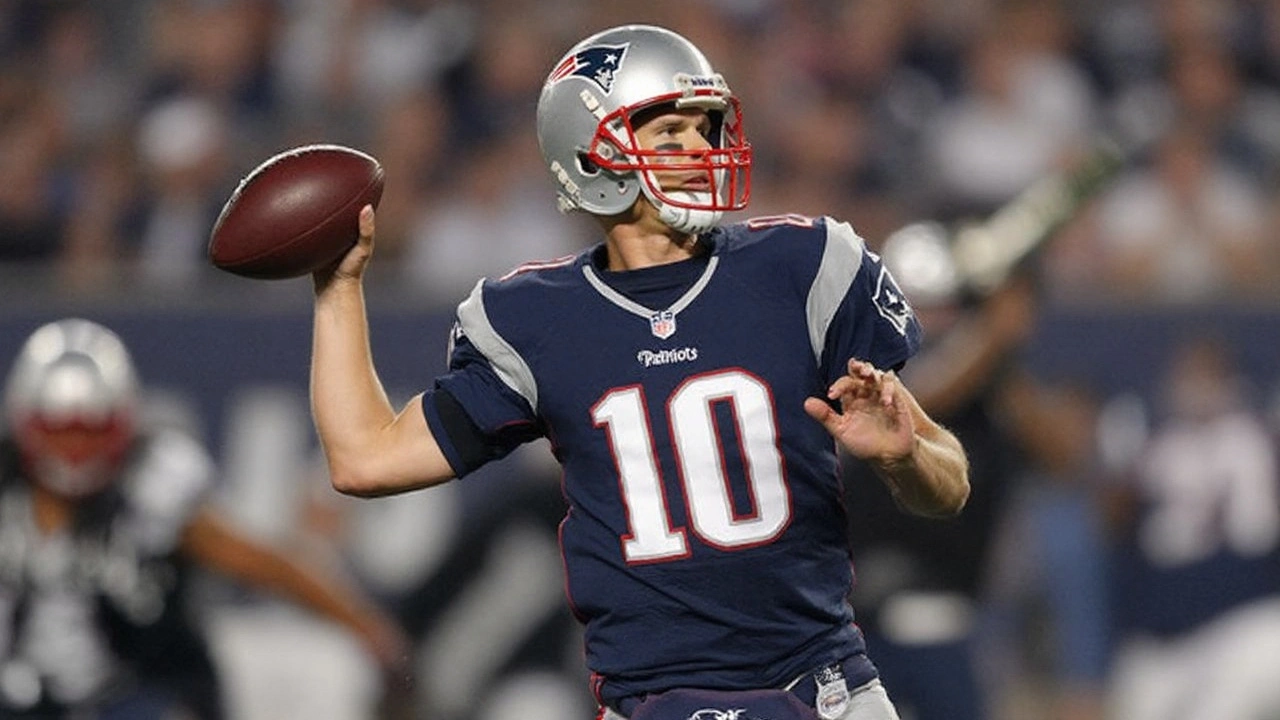A sobering season opener in Foxborough
Rain, new head coaches on both sidelines, and a full house at Gillette. It felt like a fresh start. It didn’t play like one. The New England Patriots stumbled through a 20-13 loss to the Las Vegas Raiders that looked closer on the scoreboard than it felt on the field. Mike Vrabel’s first game in charge brought early promise, then a long stretch of reminders about a roster still under construction.
New England’s best football came in the script. Drake Maye opened steady, completing quick throws and finishing a 12-play, 82-yard drive with a 2-yard dart to DeMario Douglas to match an early Raiders score at 7-7. Then the game tightened, the pocket shrank, and the miscues stacked up. Maye’s line: 30-of-46, 287 yards, one touchdown, one interception — the pick by Isaac Poll after halftime swung leverage, teeing up a Vegas scoring drive the Patriots never recovered from.
The identity Vrabel wants — physical, efficient, resilient — didn’t travel past the first quarter. After Douglas’ touchdown, New England managed a 35-yard Andy Borregales field goal before halftime, then nothing until a cosmetic 44-yarder with 19 seconds left. Across the second half, the offense produced 137 yards, and the ground game disappeared, mustering just 43 rushing yards over the final three quarters. In a cold rain, when you need a run game to steady the ship, the Patriots didn’t have one.
Las Vegas did what good Week 1 teams do: stay balanced and keep the pressure on. In his Raiders debut, Geno Smith worked the middle of the field and the sideline shots, piling up 362 passing yards with the kind of calm you get from a veteran who’s seen every coverage. His 36-yard strike to Dont’e Thornton late in the fourth quarter put the game on ice. Pete Carroll’s first Raiders team didn’t dominate with splash plays; it simply out-executed, series after series.
Rookie back Ashton Jeanty’s day was modest on paper — 19 carries for 38 yards — but his 3-yard red-zone touchdown proved the difference in a low-scoring slog. New England’s defense bent often but rarely got the stop that flips momentum. When Vegas needed a conversion, it generally found one.
Two things set the tone: the Raiders’ variety on offense and their pass rush. Tight end Brock Bowers was a problem before exiting with a knee scare, catching five passes for 103 yards and dragging defenders after the catch. Jakobi Meyers looked like the reliable chain-mover Patriots fans remember, with eight grabs for 97 yards. Add it up and the Raiders rolled to 390 yards, a tidy total in the weather and a sign of how often Vegas won first down.
Up front, Maxx Crosby and Malcolm Koonce had their usual fun with an offensive line still feeling out its combinations. They totaled two sacks and four quarterback hits between them, part of nine hits overall that rushed Maye’s clock and frayed the timing of everything New England tried to build. The pressure didn’t just end drives; it shaped play-calling, forcing more conservative looks and fewer downfield shots.
The setting didn’t help. Rain pestered the first half and returned in pockets. Vegas handled it. The Raiders leaned on quick game and crossers to let receivers run after the catch, then mixed in shots when safeties cheated forward. New England needed answers — a screen that popped, a draw that hit, a bootleg to reset Maye’s rhythm — but the counters came too late or not at all.
There were positives worth noting. Maye’s opening quarter showed poise and command. Douglas looked sudden in space. The defense, while stretched, held Vegas to 20 and tightened in the red zone enough to keep it a one-score final. That’s the frame Vrabel can build from. But the rest of the picture? It showed why this rebuild might be a multi-window project.
What the loss says about New England’s rebuild
Start at the line of scrimmage. Protection was reactive, not dictating. Too many snaps asked Maye to be perfect off his first read, and when that wasn’t there, the rush was. You could see the rookie recalibrating on the fly — resetting his feet, drifting a hair too far, trying to make a precision throw with bodies closing. That’s teachable, but it requires cleaner pockets and a run game that buys you second-and-5 instead of third-and-9.
The lack of explosives magnified everything. New England had the methodical touchdown march early, then lived in the five-to-eight-yard world. Without chunk plays, drives need mistake-free sequencing, and Week 1 rarely delivers that. The Raiders, by contrast, got their chunk gains at the exact moments they needed to breathe: a seam to Bowers, a sideline win to Meyers, and the late shot to Thornton that ended the debate.
Situational football told the same story. The Patriots weren’t good enough on the money downs or in the two-minute sequences at the end of halves. Some of that is timing and reps; some of it is a roster short on veteran playmaking that can bail you out of a bad call or a missed block. It’s not fatal in September, but it can snowball if the identity doesn’t firm up.
Las Vegas looked like a team with answers. Carroll’s imprint was obvious: tempo without rushing, spacing that forces simple throws for the quarterback, and fronts that stress protections without blitzing themselves out of position. Smith looked comfortable getting to his third option because his first two were defined. That’s what New England is chasing for Maye — clarity before the snap and easy completions that stack confidence.
So where do the Patriots go from here? A few fixes are within reach:
- Simplify protection rules on obvious passing downs. Build in a chip on Crosby or Koonce and accept you’re sending one fewer receiver. Give Maye the half-second that changes a hurried throw into a completion.
- Marry the run and play-action better. If the run isn’t efficient, find play-action that looks like your best runs anyway — same motions, same backfield action — to slow linebackers and create windows.
- Dial up more rhythm throws on first down. Slants, speed outs, glance routes. Get Maye five or six layups to start halves and after sudden-change situations.
- Lean into tempo in spurts. Not a full-on no-huddle, but enough to stop the defense from rotating their rush packages and to keep your best five linemen in a groove.
- Feature your most dependable separator. Douglas flashed; give him easy touches early in each quarter to keep defenses honest.
On defense, the mission is more about finishing. The rush got close often; Smith just found safe exits. Close lanes on third down, trust your corners to force throws outside the numbers, and make Vegas-style offenses string together 10-play drives without the bailout gain. The Patriots did some of that — holding the Raiders to 20 in bad weather is usually good enough — but the complementary piece from the offense never showed.
Injuries will hang over the week for Vegas after Bowers left with a knee issue, though he did plenty of damage before exiting. For New England, the concern is less about a single player and more about the overall attrition risk if the offense can’t stay on the field. By the fourth quarter, the defense looked gassed, and that’s the predictable end of a time-of-possession imbalance that started mid-second quarter.
Zoom out, and this was a measuring-stick game for two franchises starting new chapters. Carroll inherited a roster with established playmakers and a veteran quarterback; he sharpened what was already there. Vrabel inherited a team trying to find out who its playmakers are — and who can keep its rookie quarterback upright while that search continues. That’s not a lament; it’s the timeline.
There’s urgency all the same. Home openers matter for a young quarterback’s confidence and a fan base seeking reasons to believe. When thousands headed for the exits with five minutes left and the score 20-10, it wasn’t apathy; it was recognition. The Raiders looked ready on Day 1. The Patriots looked like they’ll need a few more Sundays to get there.
None of this writes off the season. Maye showed NFL throws and the calm you want when the pocket is clean. The defense has the bones of a unit that can keep games within striking distance. Special teams delivered the points they were asked to deliver. The gap is in the middle — the routine plays that keep an offense on schedule and the handful of explosives that flip a field.
Week 1 is for finding out who you are. New England learned the hard part: they’re not a finished product, not yet. The good news is that the fixes are clear on tape, and the quarterback is willing to make them. The bad news is that the league doesn’t wait. The next opponent will cue up the Crosby and Koonce film and test the same spots until the Patriots make them stop.
For Vrabel, the message is simple and familiar: control the line, control the game. Until New England does, it will keep living on the wrong side of one-score finals — nights where 20-13 feels like a bigger gap than seven points.

